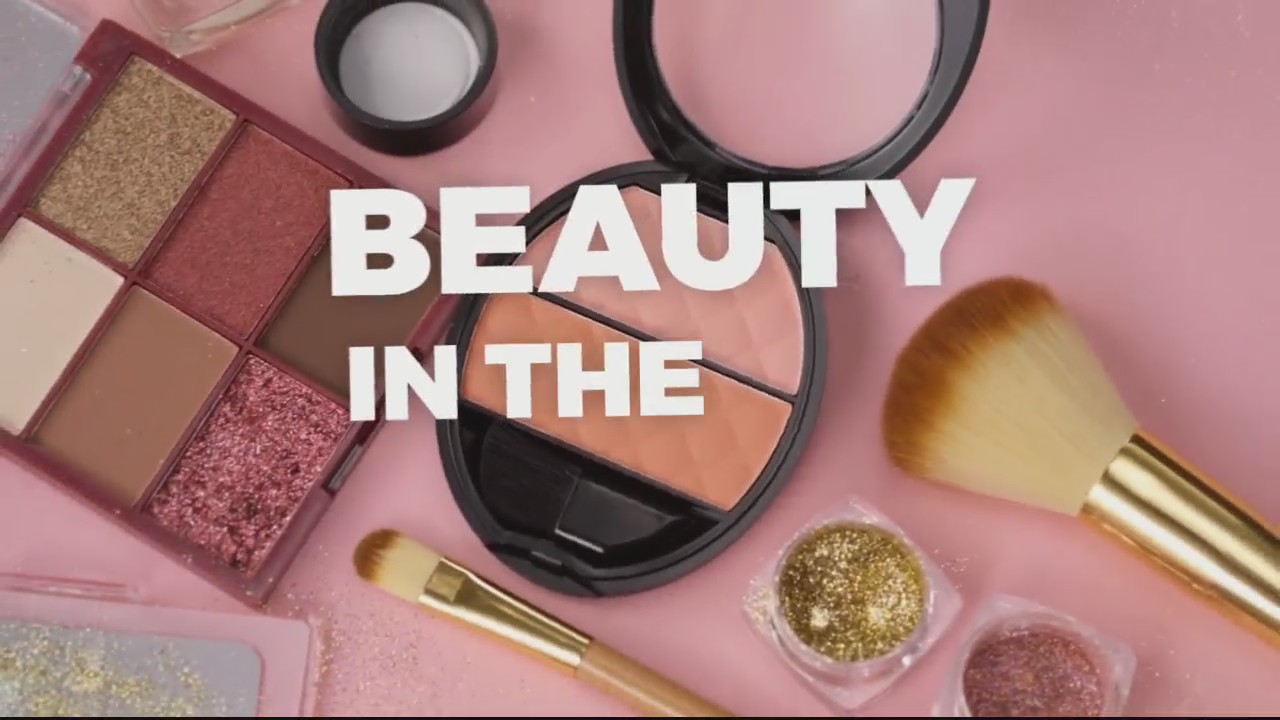5 African oils to include in your beauty routine
We look at African oils that are beneficial for the skin and hair.
AS WE embrace the warmer months, it’s time to switch your beauty routine and equip yourself with all the products you need to maintain a healthy beauty regime.
When it comes to skin and hair care, natural products work better as they are eco-friendly and gentle on the skin.
As we celebrate Heritage Month, we look at African oils that are beneficial for the skin and hair.
We all know that the African climate can sometimes be unforgiving. Fortunately, our continent boasts natural remedies that are good for the skin and the hair.
Below are the top five African botanicals oils you should have.
Mongongo
Also known as Manketti seed oil, mongongo is great for dry skin. It helps repair and strengthen the skin’s natural moisture barrier, preventing moisture loss.
It also provides deep conditioning and nourishment to hair, combating dryness and brittleness, while at the same time taming frizzy, stray hairs, promoting smoother and manageable hair.
Add a few drops of mongongo seed oil to your leave-in conditioner for extra shine and smoothness.
Baobab seed oil
Baobab seed oil is a household staple due to its multiple uses for skin care, particularly calming and soothing irritated skin. It helps fade scars, stretch marks and blemishes to promote a smoother complexion.
Related video

Mix baobab seed oil with rosemary essential oil for a stimulating scalp treatment to help promote hair growth.
Kalahari melon seed oil
Kalahari melon seed oil provides adequate hydration for your skin, leaving it soft and supple without feeling greasy. It contains powerful antioxidants that protect your skin from environmental stressors and premature ageing.
This oil helps detangle knotted hair and works effectively to protect your hair from heat-styling tools.
Add Kalahari melon seed oil to your shampoo and conditioner to enhance their moisturising effects for dry or damaged hair.
Ximenia seed oil
Ximenia seed oil offers intense moisture, relieving dry, flaky and itchy skin. It also improves your skin’s elasticity and firmness while reducing the signs of ageing.
This oil is suitable for all hair types, including colour-treated and chemically processed hair, adding shine and lustre.
Mix ximenia seed oil into your hair mask for deep hydration and nourishment.
Marula seed oil
Marula seed oil helps even skin tone, promoting a more radiant and even complexion. It is a luxurious hair treatment that deeply moisturises and conditions each hair follicle, leaving you with smoother, shinier and more manageable hair.
Mix marula seed oil with lavender essential oil for a relaxing and soothing hair treatment.
Provided by SyndiGate Media Inc. (Syndigate.info).
Adopt trellis for a beautifully green home
Beauty in a home can be achieved in different ways. For some, it can be through putting up sculptures or artistic drawings, and for others, it can be through introducing green zones that soften hard-looking surfaces.
Take, for instance, the use of trellises to introduce plants in areas that would have retained the concrete (stone, sand, and cement) look!
Osbert Mugabe, a landscape designer and ornamental plant gardener in Seguku, says trellises allow a homeowner to have plants in any corner of the home without breaking anything.
“Having pot plants placed on trellises is one way to make any area beautiful. Even in a floor-tiled area, you can have green zones through pots placed in an intricate trellis,” Mugabe explains.
However, you have to be mindful of the plant's nutrient needs so that they do not wilt away.
I have seen plants that have wilted weeks after transplant. Some gardeners may be wondering where they could be going wrong.
Besides plant nutrient requirements, one needs to consider the material from which the trellises are made and make sure they are strong enough to carry the weight of the plants together with the pots. ;
Trellises made out of wrought iron are the best to support many of the heavy ornamental plants, while wooden trellises are good for lightweight and climber plants, explains Mugabe.
Related video
Privacy Policy
But on the whole, trellises make it easy to plant beauty on any property without interfering with its architectural beauty.
In addition, Mugabe says, the trellises can be painted in any colour that a property owner finds appealing. And the pots can also be any colour of the homeowner’s choice.
Provided by SyndiGate Media Inc. (Syndigate.info).
Natural blood thinners
Apart from the pressure on me to provide the local names of plants even when they are non-indigenous, with no local names, another challenge I face handling this column is difficulty in convincing people that not all ethnobotanical knowledge is correct. Let us take bitter leaf as an example. Some people drink the exudates that are traditionally washed out of the leaves before use as vegetables. I know two close friends who came down with massive skin eruptions which required medical attention after drinking the water! This is probably due to the presence of raphides which are bundles of needle-like crystals of calcium oxalate in bitter leaf. There is no way you can convince some people that they should not drink bitter-leaf water.
Another example is the use of honey for babies. Honey may contain spores of bacteria called Clostridium botulinum. It can produce toxins in a baby’s intestines, leading to infant botulism. Children can only take honey when they are over one year old. How am I going to convince people that babies should not be fed honey when it is an age-long tradition to do so during prayers at naming ceremonies? We must unlearn some things.
As we are already aware that for every drug that benefits a patient, there is a natural substance that has the same effect. This week, on our visit to nature’s pharmacy, I will be discussing blood thinners that you can find in nature.
What are blood thinners? They are drugs that prevent the blood from clotting. They are also called anticoagulants. They are used to prevent the development of life-threatening blood clots that can cause serious health issues like heart attack and stroke. Although blood clots are necessary to prevent blood loss during injury and allow for wound healing, clot formation in the bloodstream can lead to dangerous complications.
Related video
Some people just live longer than others,
New Blood Study Points to Specific Biomarkers for Improved Longevity
Let us see some common blood thinners that you can find in nature:
- Turmeric
People have long used the golden spice known as turmeric for culinary and medicinal purposes. It is the spice that gives curry its yellow colour. Curcumin is an active ingredient in turmeric and appears to have anti-inflammatory and blood-thinning or anticoagulant properties. A 2019 review in the EPMA journal indicates that turmeric may help block blood clotting.
- Ginger
Ginger is another anti-inflammatory spice that may stop blood clotting. It contains a natural blood thinner called salicylate.
- Cayenne peppers
Cayenne peppers are also high in salicylates and may act as powerful blood-thinning agents. A 2019 study in the Ascendens Asia Journal of Multidisciplinary Research finds that cayenne pepper extract slowed blood clotting in type O+ blood samples.
- Vitamin E
Vitamin E reduces blood clotting in different ways. These effects depend on the amount of vitamin E that a person takes. It may be safer to get vitamin E from foods rather than supplements. We just concluded a series on vitamins. The food sources of vitamin E were enumerated.
- Garlic
A 2018 study from Food Science and Biotechnology reports that garlic powder demonstrates antithrombotic activities in rats. An antithrombotic agent is a substance that reduces blood clot formation. A 2020 review of studies found that garlic supplements helped reduce blood pressure and had mild antithrombotic effects.
- Cinnamon
Cinnamon contains coumarin, a powerful blood-thinning agent. Warfarin, a commonly used blood-thinning drug, is derived from coumarin. Chinese cassia cinnamon contains a much higher coumarin content than Ceylon cinnamon. However, taking coumarin-rich cinnamon on a long-term basis can cause liver damage. It may be best to stick to small amounts of cinnamon in the diet in addition to using other natural blood thinners.
7: Bromelain
Bromelain is an enzyme that is extracted from pineapples. It reduces the formation of blood clots and dissolves existing blood clots. In our series titled, ‘Medicine in unlikely plant parts,’ we mentioned that the part you throw away (pineapple leaves) contains the most bromelain. Do not forget that I said that you can make tea out of it.
8: Grapes
The flavonoids in grapes, such as quercetin, kaempferol and myricetin, have blood-thinning properties. A study published in The Journal of Nutrition in 1998 confirmed that these flavonoids in grapes have blood-thinning effects. Other studies have found these flavonoids to inhibit platelet aggregation. As a result, eating grapes regularly can help protect your heart. Grapes, along with their leaves and sap, have been traditional treatments in Europe for millennia. The grape seed extract is derived from the ground-up seeds of red wine grapes and can easily be added to food and drinks.
- Beetroot
The nitrates in beets are known to improve heart health and reduce blood pressure. Beetroot is also able to relieve blood clotting. One 2008 study found that consumption of beetroot juice increased nitrate levels and reduced platelet aggregation.
- Spices
We already had a series on spices, so they are not strange to us. Spices like cloves (kanafuru), black pepper (iyere), cumin, fennel seeds, fenugreek seeds, black seeds have blood-thinning capabilities. For vegetables, onions and tomatoes have blood-thinning potentials.
All the fruits in the berry family, including strawberries, cranberries, and blueberries, are significant blood thinners. Oranges and tangerines work in the same manner. Cod liver oil, a source of vitamin D, has shown anticoagulant properties and it can thin the blood too.
A study titled, ‘Anticoagulant Activity of Ginger (Zingiber officinale Rosc., Zingiberaceae) Rizhome Extract’ by O.S. Ajala et al, concludes that ginger rhizome methanolic extract has anticoagulant activity and can be a veritable source of new oral anticoagulants with possible better safety margins.
A study titled, ‘Anticoagulant Activities of Curcumin and its Derivative’ by Kim, Dong-Chan et al, concludes that curcumin and BDMC (bisdemethoxycurcumin) possess antithrombotic activities and daily consumption of the curry spice turmeric might help maintain anticoagulant status.
A study titled, ‘The Anti-thrombotic Property of Cayenne Pepper (Capsicum annuum) Extract in Type O+ Human Blood Coagulation’ by
Jesse Daluddung concludes that cayenne pepper (Capsicum annuum) extract exhibits anti-thrombotic activity and is effective in preventing blood clotting.
A study titled, ‘Antithrombotic Activity of Clove Oil’ by S. A. Saeed et al, concludes that clove oil is inhibitory to platelet aggregation and thromboxane synthesis and may act as anti-thrombotic agent.
It is easy to add these natural blood thinners to your diet. They can be included in meals to add flavour and nutritional benefits. You can make tea out of the spices. For turmeric, the body absorbs it more when taken with fat, so, you can blend some slices of turmeric with avocado pear. You can also blend it with coconut milk and warm it before taking it.
Let me share a possible side effect. At the point of a cut, the blood gets thicker and forms a clot to ‘plug’ the wound, so that it stops bleeding. If you take blood-thinning medications and you take these natural blood thinners excessively, you may have prolonged bleeding from a cut. If you are on medication for blood clotting, you should not go overboard with them too.
Provided by SyndiGate Media Inc. (Syndigate.info


































